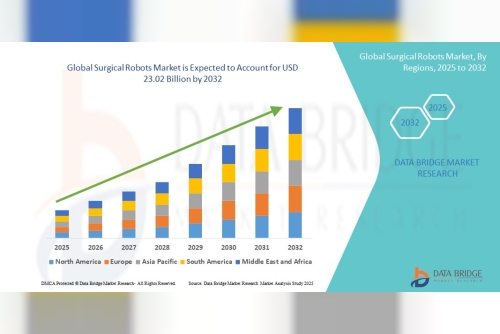The successes of cell and gene-based treatments have spurred endeavors to introduce such therapies into the market. As the need arises to cater to the clinical and commercial production of cells, coupled with the growing amount of extensive clinical data stemming from these therapies, a greater emphasis on the biomanufacturing requirement has become crucial. The high demand for the therapies is driving the growth of cell and gene therapy biomanufacturers and creating ample opportunities for them to expand in various geographies and strengthen their market presence.
Cell and Gene Therapy Biomanufacturing Market was valued at $12.31 billion in 2022 and is anticipated to reach $29.76 billion by 2031, witnessing a CAGR of 10.31% during the forecast period 2022-2031. The growth in the global cell and gene therapy biomanufacturing market is expected to be driven by the increased number of approved therapies and growing infrastructure requirements. In addition, expansion in target indications for cell and gene therapies creates a demand for large-scale biomanufacturing.
Market Lifecycle Stage
The global cell and gene therapy biomanufacturing market is in a progressing phase. The cell and gene therapy market is developing rapidly due to its potential to target chronic and rare/orphan diseases that earlier had limited treatment options. Cell and gene therapies available in the market or in the pipeline are the result of years of pioneering research. Currently, there are more than 25 cell and gene therapies approved by the FDA in the last 10 years. These factors are expected to drive the demand for consumables, equipment, and software solutions required for manufacturing cell and gene therapy, thereby augmenting the growth of the cell and gene therapy biomanufacturing market.
Moreover, manufacturers began to produce application-specific cell and gene therapy equipment in recent years.
Impact
The field of medicine is transformed with the commercialization of cell and gene therapies. With the advent of time and introduction of new technologies, cell and gene therapy areas are flourishing. There is constant ongoing research for the development of novel cell and gene therapies. According to the American Society of Gene + Cell Therapy (ASGCT), as of February 2023, there are more than 2,000 clinical trials in the pipeline. The robust clinical pipeline for novel cell and gene entities is expected to create a lucrative opportunity for manufacturers and boost the growth of the cell and gene therapy biomanufacturing market.
Key Trends
Biomanufacturing 4.0
Biomanufacturing 4.0 involves the integration of factories and supply chains through internet-connected goods and machines, which communicate with one another, gather and share data, and coordinate processes in a decentralized manner. Although biomanufacturing 4.0 is primarily implemented in high-value manufacturing sectors, the potential benefits it offers can bring to the biopharmaceutical industry, particularly in the field of cell and gene therapies. This interconnected system, driven by data, will enhance manufacturing responsiveness, resulting in more adaptable and agile biomanufacturing facilities in the future
Impact of COVID-19 on the Cell and Gene Therapy Biomanufacturing Market
Manufacturing and Supply Chains
Interruption in manufacturing because not all necessary raw materials were available; even a single shortage of raw material can have an influence on the production of biopharmaceuticals. Commodity precursors like folic acid from Asia, carbon dioxide from Washington, and glassware for vials and syringes redirected for use in other sectors were no longer produced at the same scale as large portions of the industry were shut down.Clinical Trials
To comply with the COVID-19 response guidelines or to reallocate medical staff to the pandemic response, several clinical investigations that were unrelated to COVID-19 had to be stopped.According to an article published in Elsevier on April 2021, until July 2020, it was anticipated that at least 322 trials run by biopharma companies had failed. Phase II studies made up the majority of disrupted trials (44.8%), while key Phase III trials (21.7%) and early Phase I trials (26.1%) were also impacted.Offering Treatments to Patients
It may be more difficult to prepare for and care for patients with CGTs in a hospital setting. In addition to being evaluated and accredited by the Foundation for the Accreditation of Cellular Therapy, treatment facilities for CGTs must also instruct staff on how to collect, store, and ship samples. For clinical staff, this process takes a lot of time, especially during the pandemic.Get Free Sample Report - https://bisresearch.com/requestsample?id=1455&type=download
Key Questions Answered in the Report
What are the three potential scenarios in which the global cell and gene therapy biomanufacturing market growth can unfold during 2022-2031?What are the impacts of COVID-19 and the Russo-Ukranian War on the global cell and gene therapy biomanufacturing market?What are the key trends influencing the global cell and gene therapy biomanufacturing market, and what is their potential for impacting the market?What is the patent landscape of the global cell and gene therapy biomanufacturing market like? Which year and country witnessed the maximum patent filing between January 2020 and December 2022? What are the key regulations that impact the growth of the global cell and gene therapy biomanufacturing market?What are the key differences in equipment offered by key players?What are the key drivers, restraints, and opportunities for the global cell and gene therapy biomanufacturing market? What will be their impact on the market in short-, mid-, and long-term duration?Which product type is projected to be the fastest-growing segment during the forecast period 2022-2031?What is the key application for which consumables, equipment, and software solutions are utilized? Which application area is projected to be the fastest-growing segment during the forecast period 2022-2031?Which segmentation holds the largest market share of the cell and gene therapy biomanufacturing market based on usage? Which one of those segments is expected to be the fastest growing segment during the forecast period 2022-2031?Who are the major end users for the cell and gene therapy biomanufacturing market? Which end user held the largest share of the market in 2021?What are the anticipated regulatory milestones for 2023?What is the competitive landscape in the global cell and gene therapy biomanufacturing market? Who are the key players in the global cell and gene therapy biomanufacturing market, and what are their product offerings in the market?Analyst View
According to Akash Mhaskar, Principal Analyst, BIS Research, “The global cell and gene therapy biomanufacturing market is strongly driven by the rising incidence of target diseases such as orphan diseases, cancers, metabolic disorders, and autoimmune disorders, among others, as well as the increasing approval of cell and gene therapies. The global cell and gene therapy biomanufacturing market has witnessed a steady growth in the number of new entrants and investments in cell and gene therapy, thereby driving a surge in demand for the consumables, equipment, and software solutions required in the manufacturing of these therapies. This trend is also expected to continue over the forecast period. Therefore, the impact of the aforementioned factors is expected to drive the global cell and gene therapy biomanufacturing market in the near future.”
Additionally, BIS Research also offers a dedicated and unique platform to find and access deeptech insights and updates on emerging technologies across industry verticals. Insight Monk, an AI powered deeptech search engine, is a subscription based platform that offers a library of latest market insights and updates based on emerging tech. Learn more about InsightMonk here. https://www.insightmonk.com












